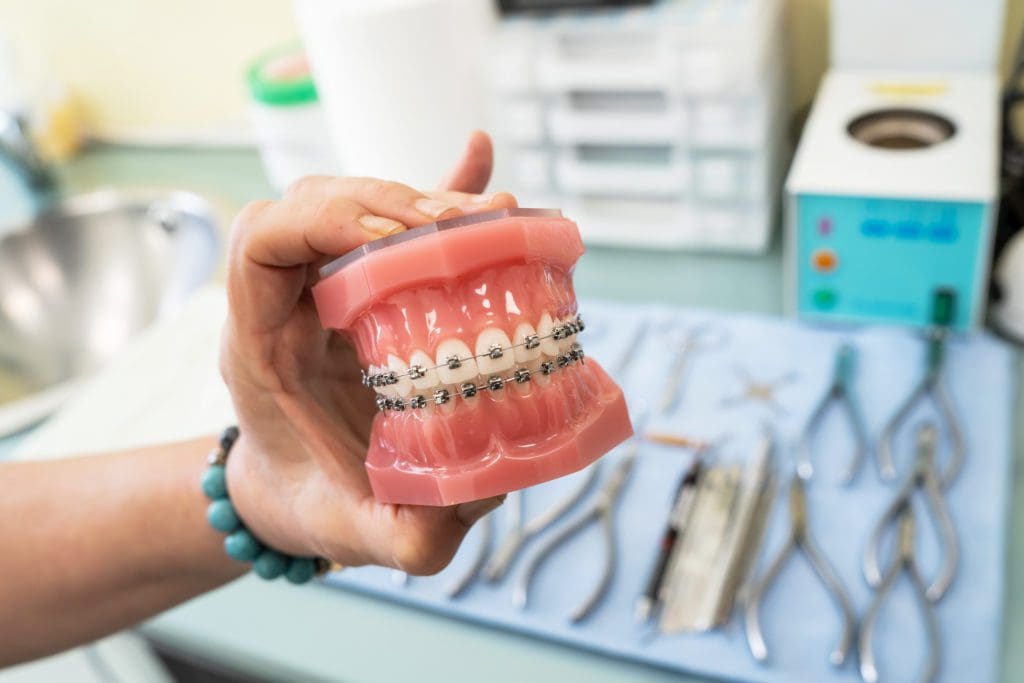Finding the Right Cumming Orthodontist for Your Braces and Aligners Requirements
Finding the Right Cumming Orthodontist for Your Braces and Aligners Requirements
Blog Article
Comprehensive Overview to Orthodontics Procedures for Fixing Oral Imbalances
In the realm of orthodontics, the journey to accomplishing a flawlessly aligned smile includes a myriad of treatments customized to fix oral misalignments. From standard dental braces to invisible aligners and even medical choices, the area of orthodontics offers a series of options to resolve varying levels of dental irregularities. Comprehending the ins and outs of each treatment, including their devices, advantages, and possible drawbacks, is important in making educated choices concerning one's orthodontic therapy. As we navigate through the extensive guide to orthodontic procedures for remedying oral imbalances, the complex information of each approach will certainly unravel, clarifying the path toward a unified and practical dental positioning.
Orthodontic Procedures Overview

Routine changes and monitoring are vital components of orthodontic therapy to make sure progress is on track and to make any type of needed alterations along the way. By undergoing orthodontic procedures, clients can not only accomplish a straighter smile however likewise enhance their total dental health and function.
Typical Dental Braces: How They Function
When taking into consideration orthodontic therapies for oral misalignments, traditional dental braces attract attention as a tried and true method for dealing with teeth placing. Typical braces include braces, wires, and bands that interact to use constant stress on the teeth, slowly moving them right into the desired placement. The brackets are connected to the teeth using an unique adhesive, and the cables are threaded via the brackets. By adjusting the stress of the cables, orthodontists can manage the instructions and force put on each tooth, directing them right into proper alignment with time.
As stress is applied to the teeth through the braces, the bone surrounding the teeth is reshaped to support the brand-new tooth positions. Clients will need regular adjustments at the orthodontist's office to ensure the dental braces proceed to use the correct pressure for effective teeth movement.
Invisible Aligners: Benefits And Drawbacks
Unnoticeable aligners provide a discreet and practical option to standard dental braces for remedying dental misalignments. These clear, customized trays are practically undetectable when used, making them an enticing choice for individuals seeking an extra cosmetically pleasing orthodontic therapy. Among the key benefits of unnoticeable aligners is their removability, allowing for easier upkeep of dental hygiene contrasted to typical dental braces. Clients can remove the aligners prior to consuming or brushing their teeth, lowering the risk of food getting embeded the home appliance and simplifying the cleansing process.

Surgical Orthodontic Options
Surgical treatments in orthodontics present sensible choices for addressing complex dental misalignments that may not be efficiently settled via standard orthodontic therapies. While traditional braces and invisible aligners can fix several orthodontic issues, certain instances call for medical intervention to achieve ideal outcomes. Surgical orthodontic options are typically recommended for extreme malocclusions, substantial jaw disparities, and situations where the underlying bone structure needs alteration to attain appropriate alignment.
One common medical orthodontic procedure is orthognathic surgical treatment, which entails repositioning the jaws to correct useful problems such as difficulty speaking or chewing. This surgical procedure is often executed in partnership with an orthodontist who aids line up the teeth before and after the treatment. Surgical orthodontics may also involve treatments to expose impacted teeth, eliminate excess periodontal tissue, or improve the jawbone to create a more harmonious facial account.
Before thinking about medical orthodontic choices, individuals go through an extensive examination to determine the necessity and possible advantages of such interventions. invisalign. While surgery may appear difficult, it can significantly improve both the function and visual appeals of the smile in situations where standard orthodontic treatments drop short
Retainers and Post-Treatment Treatment

Failure to conform with post-treatment care instructions can result in relapse, where the teeth gradually move back in the direction of their original positions. Consistent retainer wear, excellent dental health, and routine dental examinations are necessary for maintaining the results accomplished with orthodontic surgery and guaranteeing the lasting stability of the fixed dental positioning.
Conclusion
Finally, orthodontic procedures offer various alternatives for dealing with oral misalignments. Conventional dental braces make use of metal brackets and cords to move teeth into proper alignment. Unseen aligners offer a more very discreet option but might not be appropriate for all cases. Surgical orthodontic options are readily available for extra extreme misalignments. Retainers are typically made use of post-treatment to maintain the brand-new positioning. In general, orthodontic procedures can efficiently boost oral wellness and visual appearance.
As we navigate with the thorough guide to orthodontic treatments for dealing with dental imbalances, the elaborate information of each technique will unfold, dropping light on the path toward a harmonious and functional oral positioning. - orthodontics
One of the most typical list of dentist near me orthodontic therapies is the usage of braces, which consist of steel braces and wires that apply mild stress to progressively shift teeth into the wanted placement.When thinking about orthodontic therapies for oral imbalances, conventional dental braces stand out as a reliable method for fixing teeth placing. In addition, invisible aligners may not be appropriate for complicated orthodontic concerns that require more significant teeth motion, as they are normally advised for light to moderate cases. Retainers are customized orthodontic tools developed to Learn More Here hold teeth in their dealt with placements after the conclusion of orthodontic therapy.
Report this page